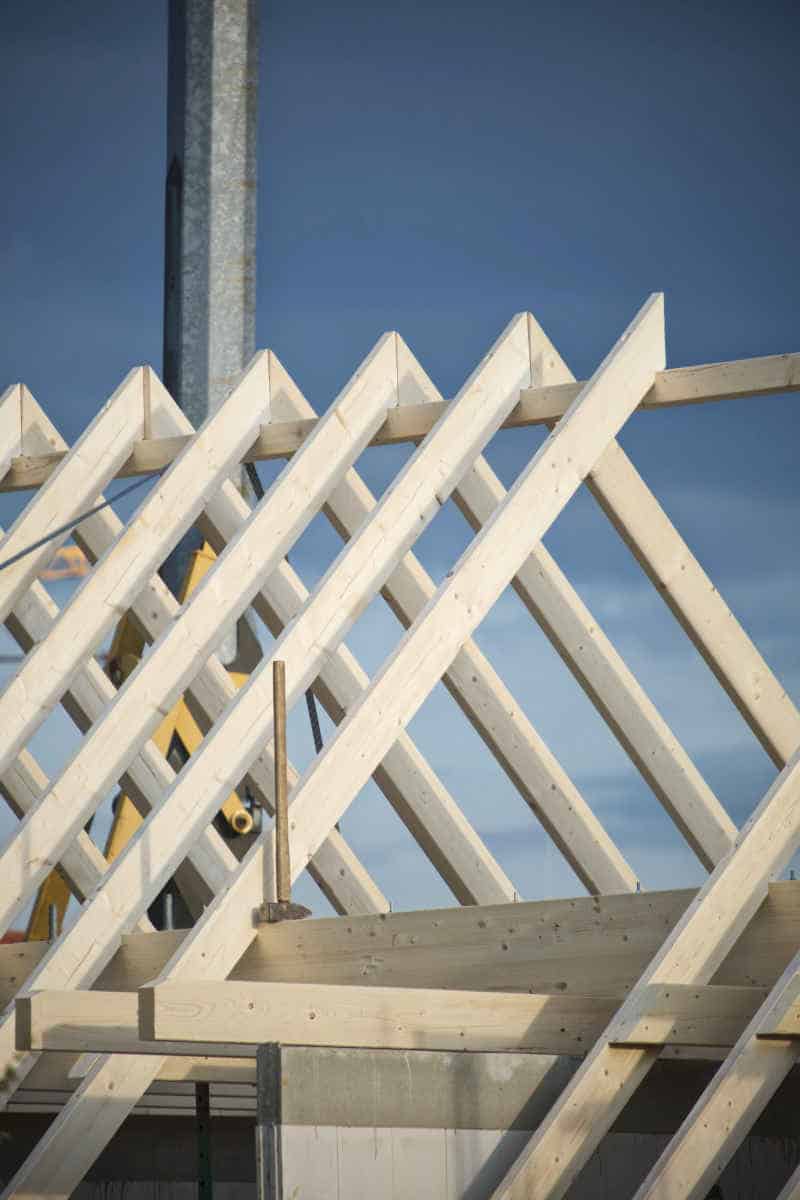
With current costs for builders and material being so expensive, there has been a surge in interest in home remodeling and improvements. In particular, at hpd architects, we’ve been getting a lot of questions about how to go about heightening ceilings and raising the roof. Nobody wants eight foot ceilings now, and so we are fielding a lot of queries about lifting the ceiling up to nine or ten feet tall.
Here are some items we commonly discuss with clients regarding raising the roof or adding a second story.
- How hard is it going to be to raise the roof on your house?
- How was your roof constructed?
- Can a roof be raised in only one or two rooms?
- What about raising the roof and adding an extension?
- What do you need to know about adding a second story?
- Is it more expensive to build up or build out?
- Why do you need to consider the layout when building up?
How hard is it going to be to raise the roof on your house?
If that is something you are considering, the first thing you need to check is can it actually be done in your home. If the ceilings are framed with joist and rafters, meaning they framed the ceiling and then they framed the roof, and they are not all one triangular piece, that’s called a truss, and that is going to be much more difficult to change. However, if the house was built with just a two by six S and two by eights right there on the site, then that is going to be much easier to remodel.
How was your roof constructed?
To find out what kind of roof you have, take a look up in the attic. If it’s done with trusses, you’ll see a bunch of wooden zigzags and perforated silver plates at the joints. The part of the truss that’s under the roof meets that zigzag, and there will be a connector plate right there, usually made of galvanised metal. There are a bunch of little teeth on the plate. When it is laid over the joint those teeth bite in and hold the roof together. If you see that, it means your ceiling and roof are essentially all one piece, so you can’t take the ceiling out without messing up the integrity of the roof.
When I have a speaking engagement with realtors, this is something I often talk about because they want to be able to advise their clients on whether they are going to be able to raise the roof on a property they have an interest in. So that’s the first thing I tell them to check.
Can a roof be raised in only one or two rooms?
If you only want to raise the roof in one or two rooms, oftentimes you can leave the roof where it is. And if if you can remove just the ceiling framing up and then have a tray ceiling where the underside of the roof is visible around the perimeter of the room.
The top of the wall would stay where it is but rather than having a horizontal ceiling meet the wall at a right angle, you’ll see the underside of that roof structure before you get to the flat part of the ceiling.
What about raising the roof and adding an extension?
If you are intending to raise the roof at the same time as adding an extension, the new part will be all new construction so the ceilings will be whatever height you want them to be. On the original house, you will have to build the walls up to whatever height you want and then build a new roof. There are special connector brackets that help tie the wall and roof together so they don’t get ‘tippy’ at the connection. You want to tie it all together so that it behaves like it’s one piece.
What do you need to know about adding a second story?
If you are thinking not of raising the ceiling but of making use of the attic as a second floor, then a lot of times, the ceiling will still need to be reframed. The framing that is in the ceiling under the attic was never intended to hold up a second floor so you will likely have to rip it out and replace it with a stronger one anyway. So that gives you an opportunity to raise the ceiling height, even if your initial intention was to build up a floor. .
Is it more expensive to build up or build out?
Usually building up is less expensive because there will be less exterior walls and less foundation to build, and right now concrete and lumber are really expensive. If you’re building out, you’ve still got the expense of constructing the full roof, full exterior walls and a full foundation. But building up, you only have to think about building the stairs, floor framing and probably some exterior wall, but not full because part of the previous roof is probably covering it.And then the roof over that additional piece.
It’s a good conversation to have with a contractor at the time that you’re wanting to do it because you have to sort of see what the market is doing as far as construction costs. And right now both concrete and lumber are crazy expensive. So based on what is sort of driving the market at the time, that might help make your decision.
Another factors in your decision might be HOA restrictions as well as the current layout of your house. Maybe you have a perfect place for a stair and it makes perfect sense to go up. Or maybe it makes more sense to create a hallway next to your current bedrooms and extend it out so that you can add more rooms. Sometimes the house will tell you what it wants, and all you have to do is listen.
Why do you need to consider the layout for building up?
If you decide that a second floor is the way to go, there are a few things to look at. Plumbing is one. Pay attention to the location of plumbing in the walls on the first floor. If you can get the second floor plumbing aligned with the plumbing downstairs that makes for a much more straightforward plumbing wall.
Another thing to look at is whether you want your kids playroom on top of your master bedroom. You wouldn’t want to have a laundry room that backs up to the baby’s bedroom because you might be doing laundry at all hours of the night and we don’t want a thumping washer and dryer waking up the baby. So think about how you’re going to live in the space and who’s making noise at what time of the night.
When my parents built our house, my dad was a commercial pilot and he was flying a lot of red eye flights overnight. He’d get home in the morning and have to sleep for a good part of the day to get backmup to speed after a trip. Normally, when a house is being designed you would want the master suite to be on the east side of the house, so it gets the morning sun and it wakes you up. But my parents wanted it the other way around. They didn’t want bright light coming into the bedroom because it would disturb dad’s sleep.
So think about how you are going to live in the house, and what is happening in your life right now that you may need to accommodate. Also think about what’s coming in five and 10 years. Right now, as I write this, I can hear the microwave pinging as my kids are making snacks. So had I thought about it at the time, I would not have planned my house to have my home office next to the kitchen.
Think also about who’s going to be flushing the toilet at 2:00 AM and who might be woken up by that because plumbing is hard to make silent. As much as we insulate pipes,there’s always some noise from them.
If you’ve got kids, you might not want to have the noise of them thumping up and down the staircase, right next to your formal dining room. Whether you are building up or building out, spending the time to plan the layout to accommodate all the ways a house is lived in will be time well spent.
Laura Davis is a registered architect and interior designer in the state of Texas and Colorado, and a founding member of hpd architecture + interiors. Laura's extensive experience includes residential as well as commercial and retail projects. She also has a particular interest in restoration, holding a certificate in Historic Preservation. She is energized by the character of older homes and the stories of those who have lived there. Responding to the needs of the current owner, while also honoring the personality of the original home is a delicate process to be enjoyed.

Excellent. Thank you very much